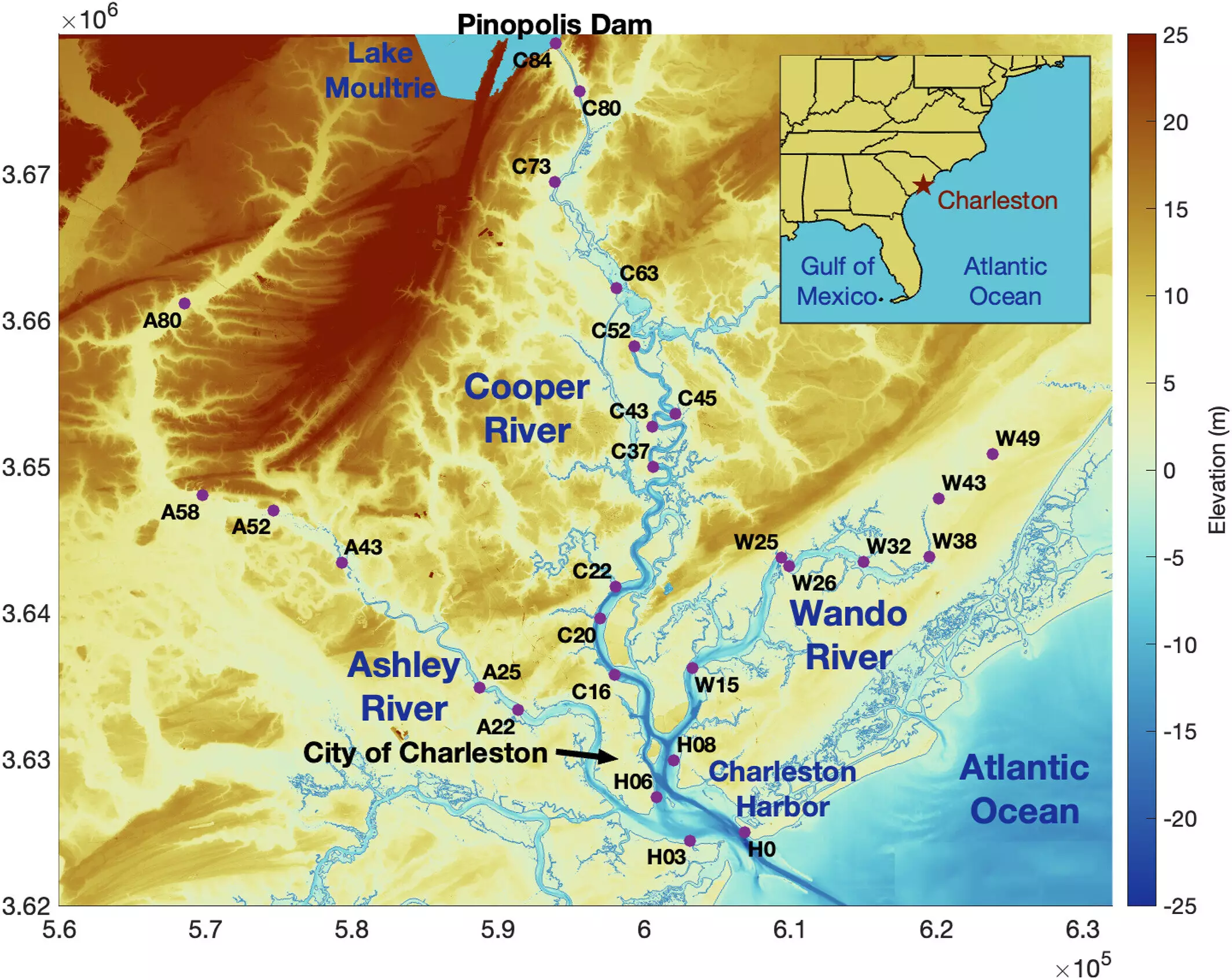In recent years, the construction of dams has surged globally, often hailed as a solution to flood mitigation, particularly in the face of escalating climate challenges such as intense storms and rising sea levels. However, a groundbreaking study published in the Journal of Geophysical Research: Oceans challenges the conventional wisdom regarding the efficacy of dams in coastal estuaries. By examining a century’s worth of data from Charleston Harbor, South Carolina, researchers reveal insights that could redefine how we utilize these massive structures in vulnerable coastal regions.
Estuaries play a critical role in understanding flood dynamics due to their unique geographical characteristics. Typically funnel-shaped, these water bodies create a natural mechanism for water to flow from rivers into the ocean. The shape, however, poses a dilemma when dams are introduced. Researchers identified that while conventional thought suggests storm surges diminish as they move inland, the opposite may hold true in some cases influenced by damming. Steven Dykstra, the lead author of the study, articulates this phenomenon: the construction of a dam effectively shortens the estuarine body, which can lead to intensified storm surges as waves are reflected and amplified within a constricted channel.
The study illustrates that dams do not simply act as barriers; they transform the hydrodynamics of coastal regions. Combining empirical data with advanced computer modeling, researchers assessed the flood response of 23 estuaries, comparing those with dams to naturally occurring systems. What emerged was a complex interplay between the size and shape of the tidal basin and how water behaves during storm events. Notably, when conditions are right, storm-induced waves can grow larger in modified environments rather than diminish—a potentially dangerous outcome that contradicts the original purpose of the dam.
To visualize this concept, Dykstra draws an analogy to bathtub water sloshing during a vigorous splash, underscoring that specific wave patterns—even in areas deemed safe from direct coastal influence—can lead to overwash and flooding further inland. Thus, while the intent behind dam construction may be to protect coastal areas, the actual results may exacerbate flooding risks in unforeseen ways.
The implications of these findings are profound, particularly as climate change continues to alter sea levels and storm frequency. Many coastal communities, often unaware of their vulnerability despite being situated well inland, could remain at risk due to compounded storm effects caused by these infrastructural choices. The study reveals a striking reality: significant storm surges can travel more than 50 miles inland, impacting regions well beyond the immediate shoreline. This raises critical concerns regarding urban planning and emergency preparedness in these areas, necessitating a reconsideration of how we perceive coastal risk zones.
Moreover, as sea-level rise accelerates, populations far from the immediate coast may find themselves increasingly susceptible to flooding. Dykstra stresses the importance of raising awareness within communities that might not recognize their proximity to coastal influences. Preparedness, both in policy and infrastructure, must evolve to account for the newfound vulnerabilities that stem from the construction of coastal dams.
Contributed by a multidisciplinary team, including researchers from the University of South Carolina and California Polytechnic State University, this study emphasizes the necessity of collaboration among scientists, engineers, and local governments in addressing these challenges. It calls for innovative strategies and the integration of scientific data into decision-making processes regarding coastal management.
As we confront the realities of climate change, it becomes crucial to rethink our approaches and investments in coastal infrastructure. Lessons gleaned from Charleston Harbor could inform future projects worldwide, steering us toward more resilient, informed practices. Ultimately, while embracing technological advancements in flood management is essential, we must do so with a clear understanding of the complex dynamics at play, ensuring that efforts to safeguard coastal communities do not inadvertently amplify their risks.
The study sheds light on a critical but overlooked aspect of coastal management—the unintended consequences of dam construction. As we stand on the brink of climate realities, it is imperative that policymakers, engineers, and communities alike critically assess the implications of existing and future dams. By doing so, we may foster a more sustainable and foresighted approach to coping with the challenges posed by climate change and rising water levels.

